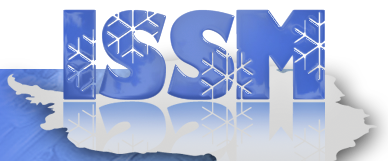|
New moving front capability
Abstract
Calving is a major mechanism of ice discharge of the Antarctic and Greenland ice sheets, and a change in calving front position affects the entire stress regime of marine terminating glaciers. The representation of calving front dynamics in a 2-D or 3-D ice sheet model remains non-trivial. Here, we present the theoretical and technical framework for a level-set method, an implicit boundary tracking scheme, which we implement into the Ice Sheet System Model (ISSM). This scheme allows us to study the dynamic response of a drainage basin to user-defined calving rates. We apply the method to Jakobshavn Isbræ, a major marine terminating outlet glacier of the West Greenland Ice Sheet. The model robustly reproduces the high sensitivity of the glacier to calving, and we find that enhanced calving triggers significant acceleration of the ice stream. Upstream acceleration is sustained through a combination of mechanisms. However, both lateral stress and ice influx stabilize the ice stream. This study provides new insights into the ongoing changes occurring at Jakobshavn Isbræ and emphasizes that the incorporation of moving boundaries and dynamic lateral effects, not captured in flow-line models, is key for realistic model projections of sea level rise on centennial timescales.Reference
Bondzio, J. H., Seroussi, H., Morlighem, M., Kleiner, T., Rückamp, M., Humbert, A., and Larour, E. Y.: Modelling calving front dynamics using a level-set method: application to Jakobshavn Isbræ, West Greenland, The Cryosphere, 10, 497-510, doi:10.5194/tc-10-497-2016, 2016.
|
JPL HOME |
EARTH |
SOLAR SYSTEM |
STARS & GALAXIES |
SCIENCE & TECHNOLOGY

BRING THE UNIVERSE TO YOU: JPL Email News | RSS | Podcast | Video

BRING THE UNIVERSE TO YOU: JPL Email News | RSS | Podcast | Video












